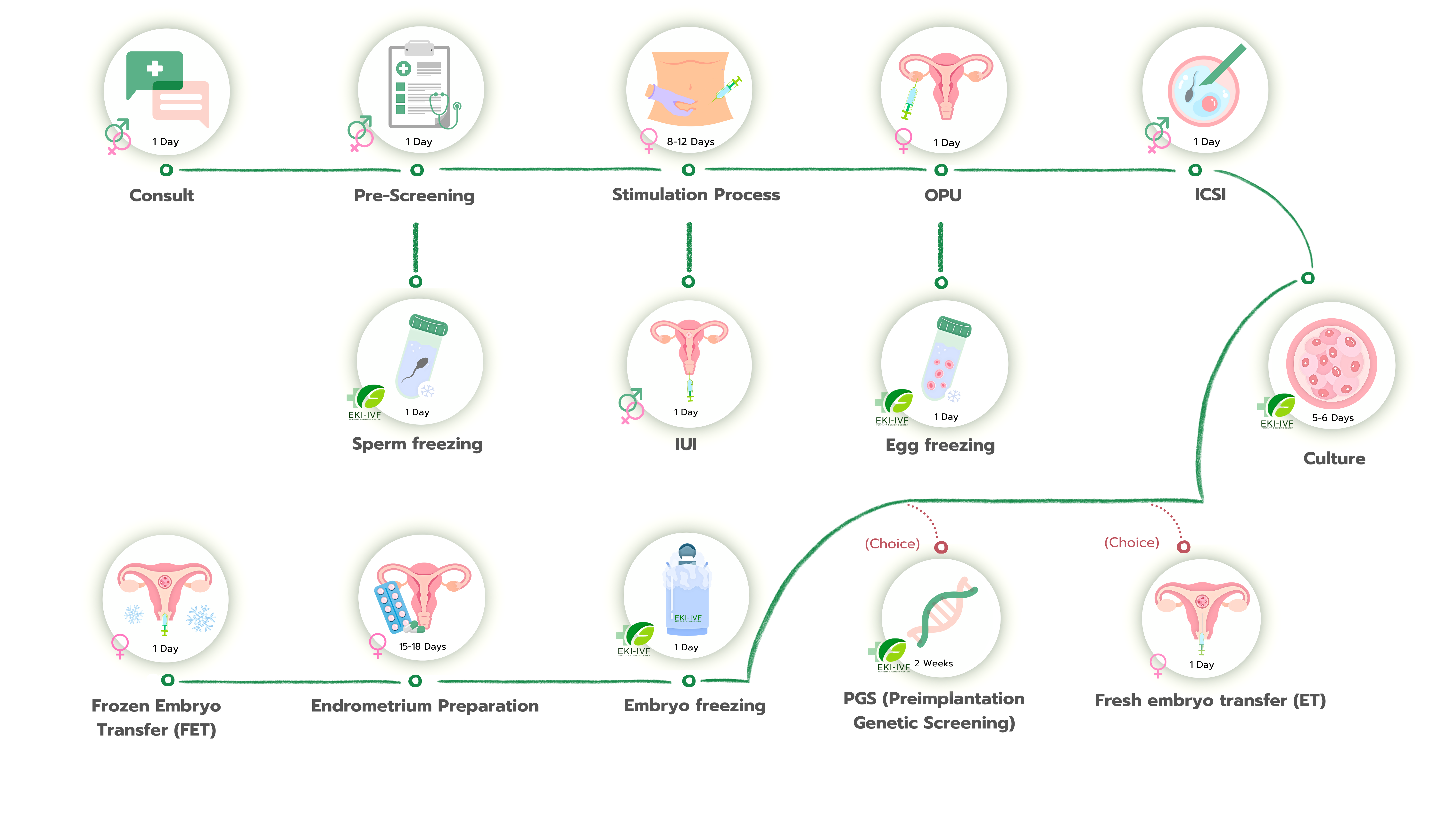EKI-IVF services
In Vitro Fertilization (IVF) Process
Duration and steps involved in treating infertility through various methods.

Intrauterine Insemination (IUI)
Intrauterine Insemination (IUI) is a fertility treatment that involves placing sperm directly into a woman’s uterus. The sperm used for IUI has been specially prepared in a laboratory to improve its chances of fertilizing an egg. This procedure is typically performed around the time of ovulation to maximize the chances of conception.
Compared to natural conception, IUI offers several advantages. The sperm used in IUI has been carefully selected for its quality and motility, ensuring that only the healthiest sperm are introduced into the uterus. Additionally, by bypassing the cervix, IUI allows a higher concentration of sperm to reach the fallopian tubes where fertilization occurs…..
In vitro fertilization with intracytoplasmic sperm injection (IVF/ICSI)
The process involves retrieving a mature egg from the female partner and fertilizing it with sperm from the male partner in a laboratory setting.
Intracytoplasmic Sperm Injection (ICSI) is an advanced assisted reproductive technology that involves injecting a single sperm directly into an egg. ICSI significantly enhances the fertilization rate, leading to a higher likelihood of successful IVF outcomes…..

Egg Freezing
Egg freezing is a fertility preservation technique that involves rapidly cooling eggs to extremely low temperatures using a process called Vitrification Freezing. This process halts the eggs’ biological clock, allowing them to be stored for future use.
Why freeze eggs? A woman’s eggs decline in quality as she ages. As a result, both egg count and fertility naturally decrease over time…..
Sperm Freezing
Sperm freezing is a process where sperm cells are frozen and stored in liquid nitrogen at a temperature of -196 degrees Celsius, preserving the sperm’s condition at the time of freezing, as if time has stood still.
Why is sperm freezing necessary? & Who is sperm freezing suitable for? Typically, a male releases 300-500 million sperm cells in a single ejaculation…..
Percutaneous Epididymal Sperm Aspiration/Testicular Epididymal Sperm Extraction (PESA/TESE)
สFor males who are unable to produce sperm during ejaculation or are infertile due to blocked or damaged sperm ducts, natural conception may not be possible.
However, with advancements in medical technology, these men can now father a child through sperm retrieval directly from the testicles, known as PESA or TESE.
Pre-implantation Genetic Testing (PGT)
Current infertility treatment technology (IVF) allows for the extraction of cells from embryos for genetic testing to screen for abnormalities before embryo transfer, thereby increasing the success rate of pregnancy.
Hysteroscopy
It is a procedure that involves inserting a small camera through the vagina into the uterus, allowing doctors to visualize the uterine cavity clearly for diagnosing various abnormalities. Minor surgical procedures, such as removing abnormal tissue samples or certain types of polyps, can also be performed during this procedure.
Hysteroscopy is a procedure that uses a small, approximately 3-millimeter camera inserted through the vagina, eliminating the need for abdominal incisions…..
Sperm Analysis
This is a test to assess the quantity, quality, and morphology of sperm in order to analyze the causes of male infertility. The test is divided into two parts: macroscopic examination and microscopic examination.
Tips for Preparing Please make an appointment at the EKI-IVF Clinic for sperm quality analysis (Sperm Analysis)…..






